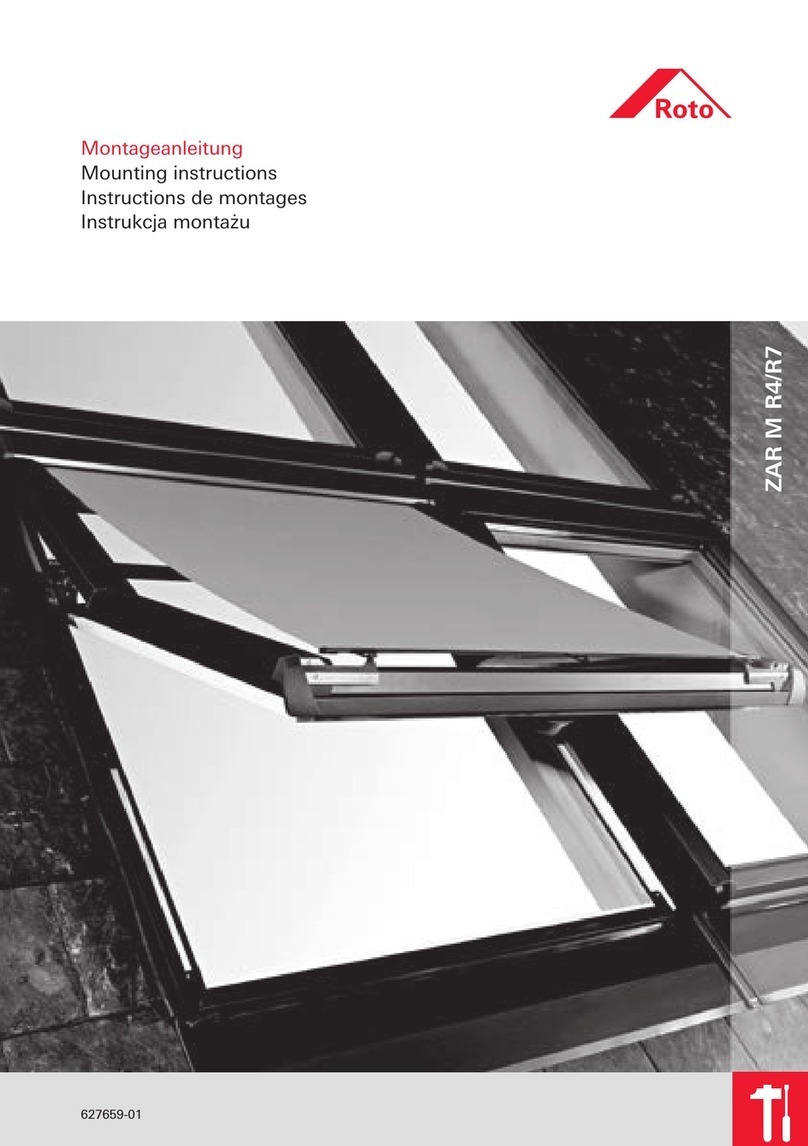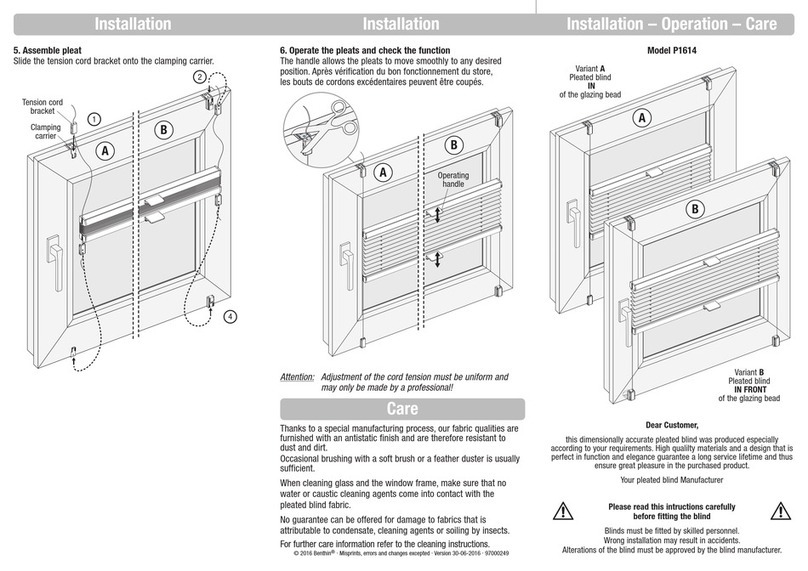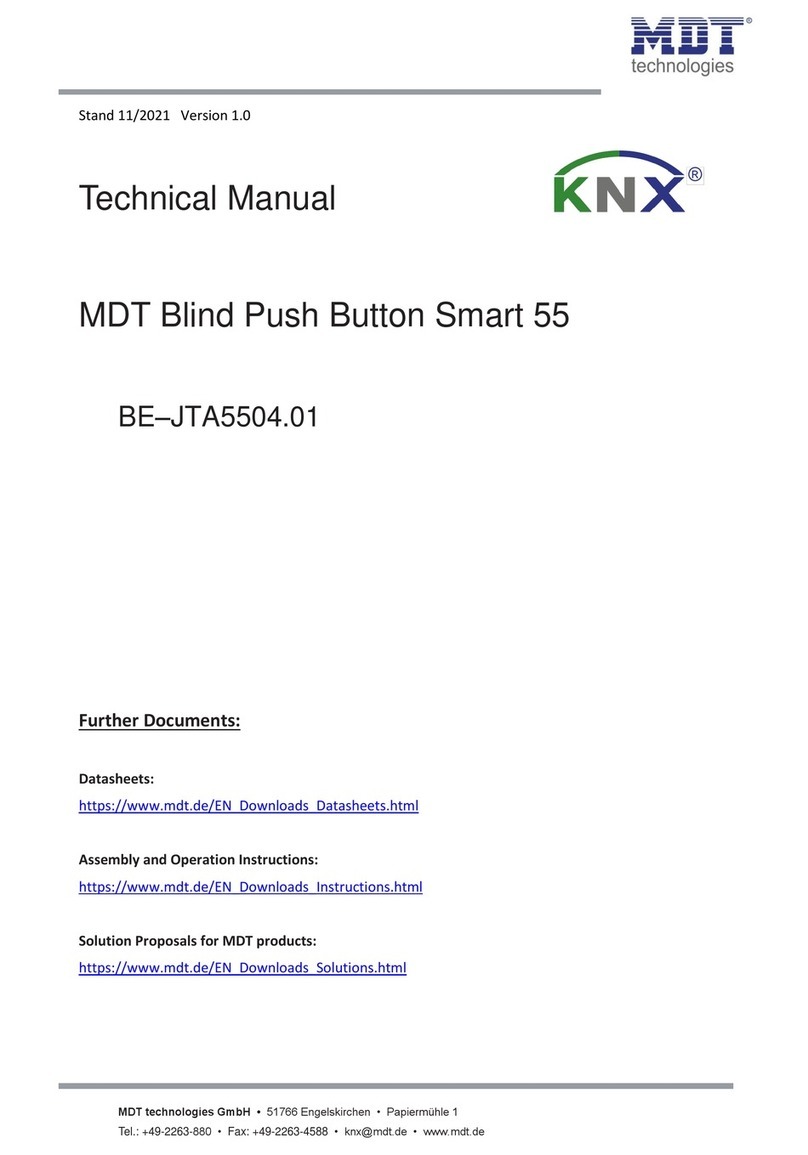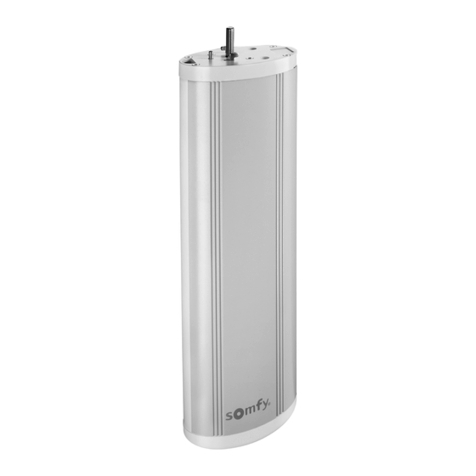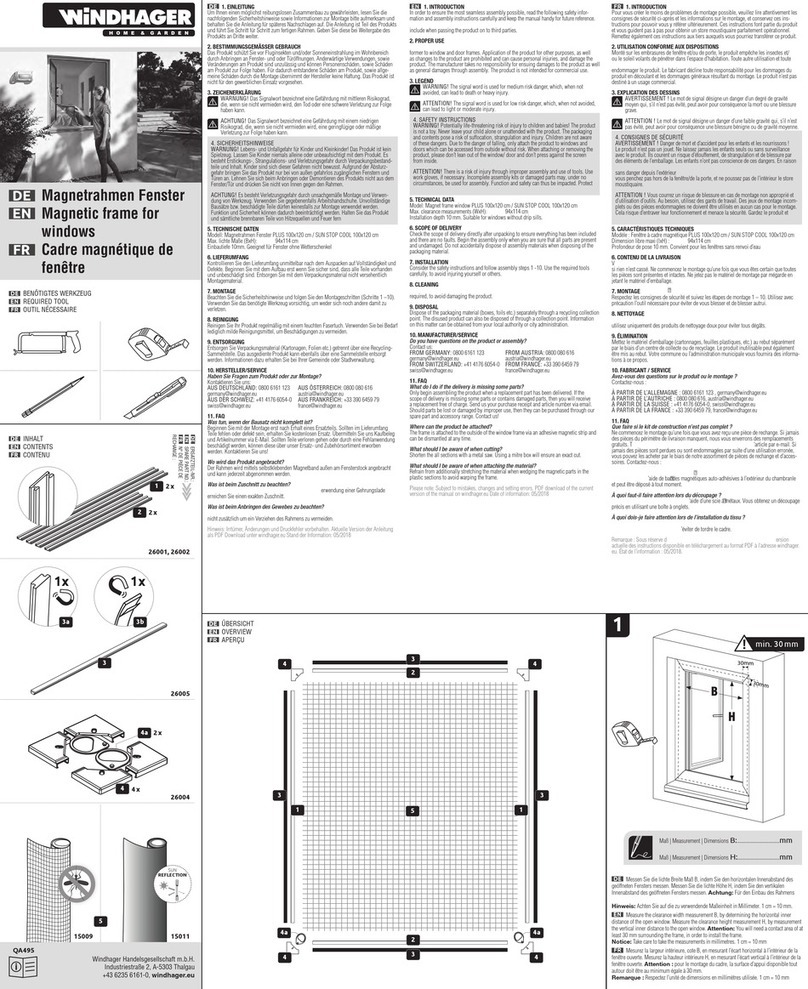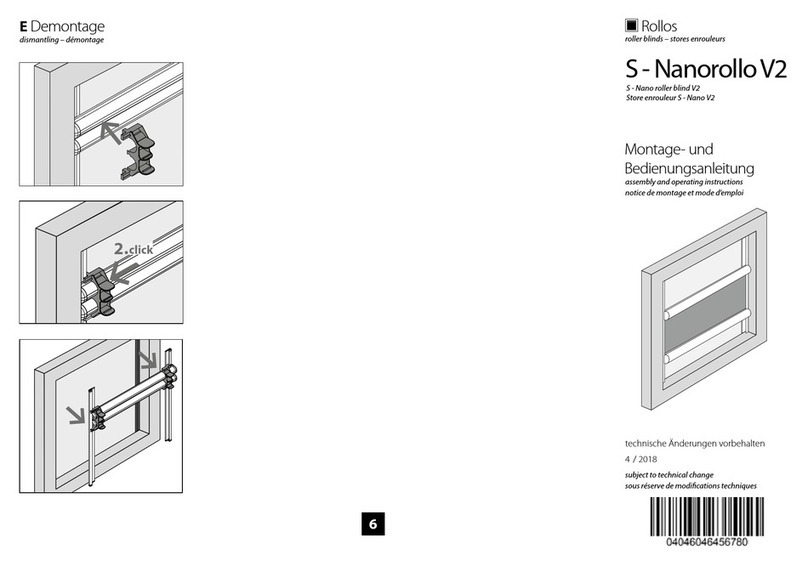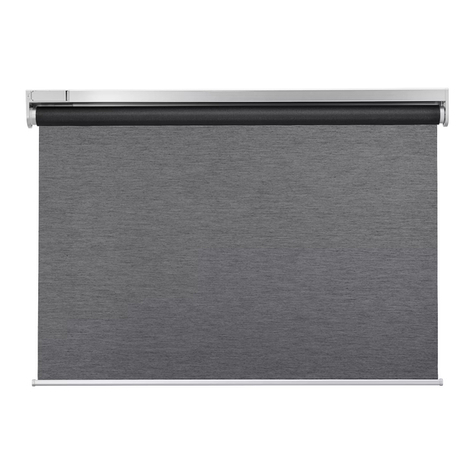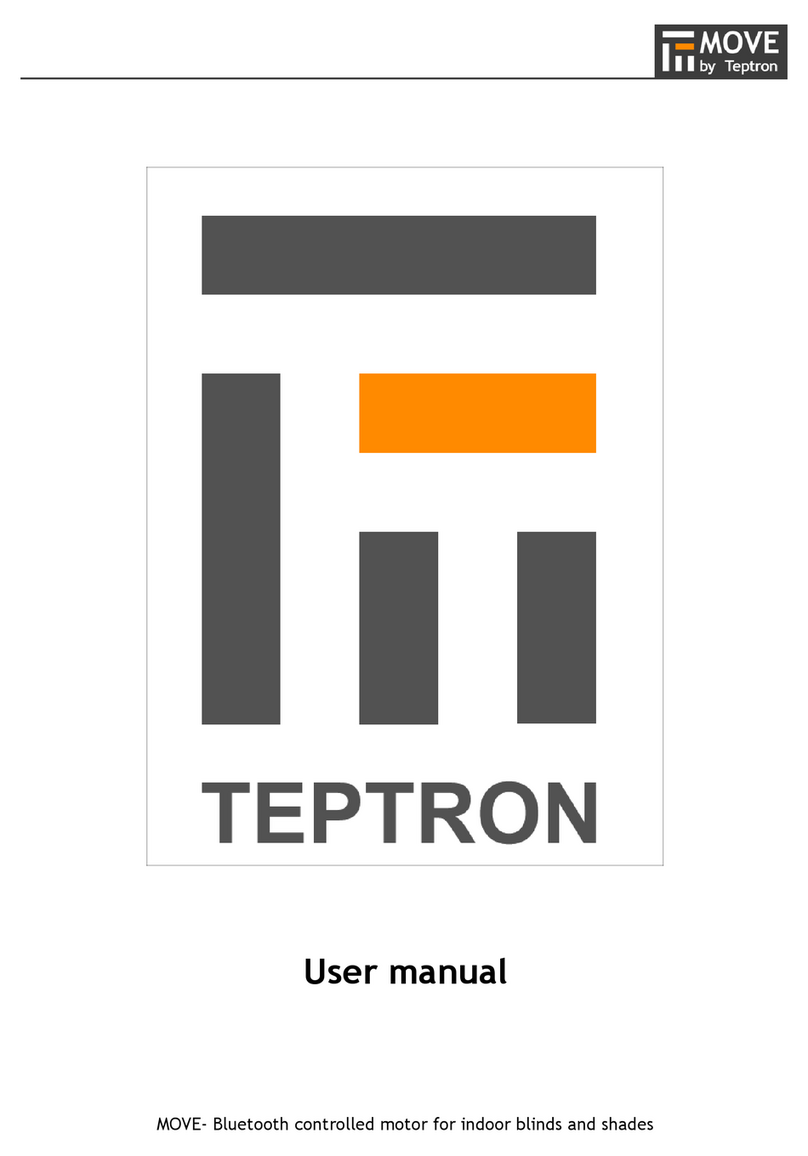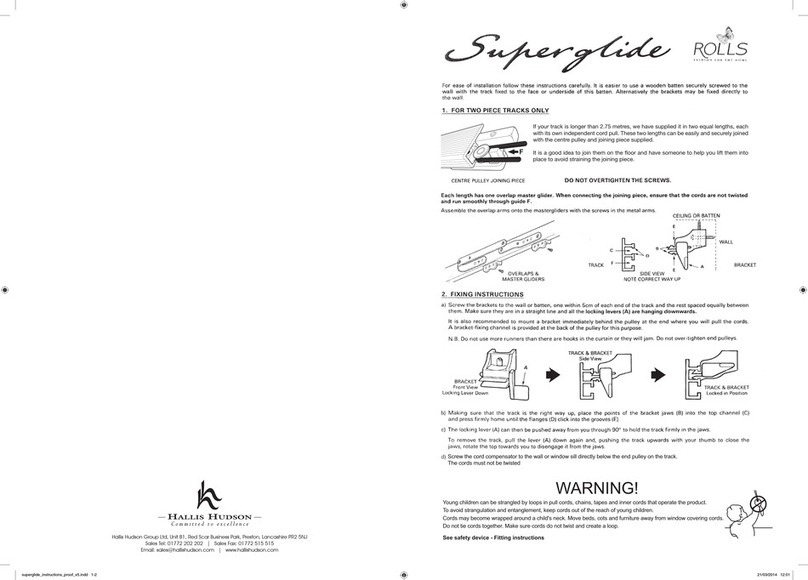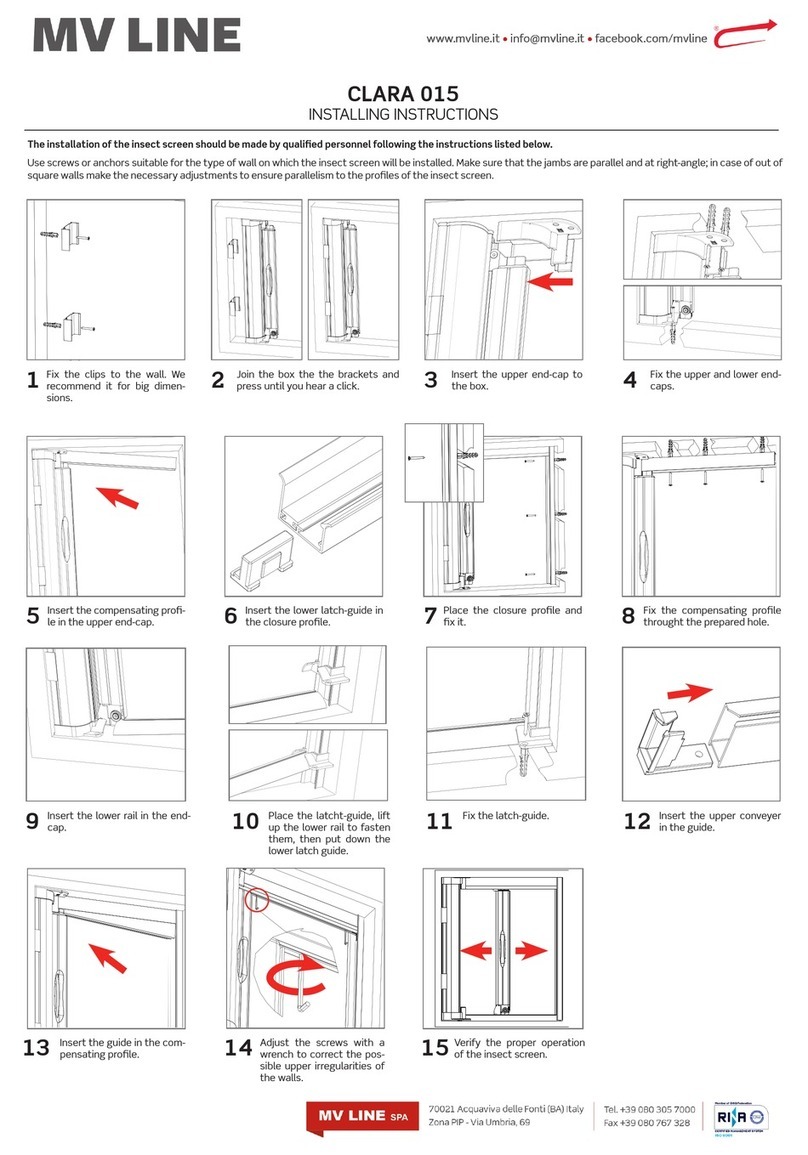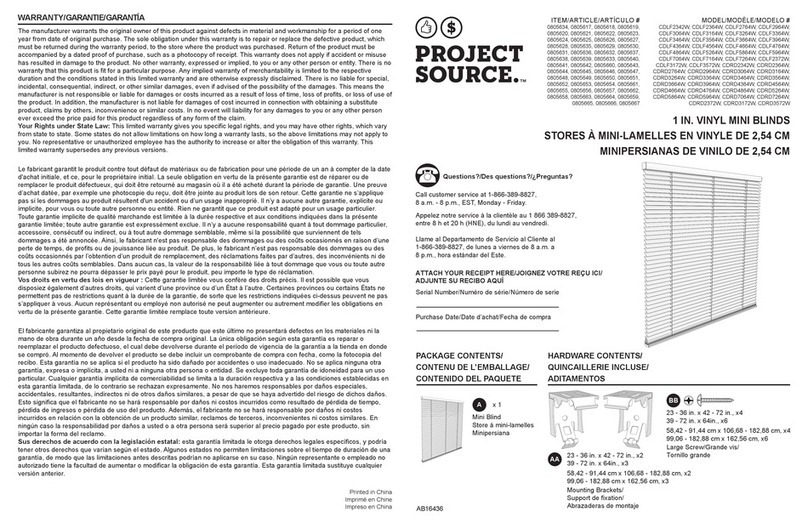
SZF SkyFlow External Venetian Blind System
Operating & Maintenance Manual
5.2. Repair
Do not attempt unauthorized repair or modification of the Venetian blind structure or movement system. If the Venetian blind fails to work properly, any of its
components requires replacement or the Venetian blind structure requires any modification, consult the vendor or its authorized reseller, since the
relevant servicing must only be done by an authorized product installer.
5.3. Technical inspection
To maintain the full performance and proper operation of the Venetian blind, periodic technical inspection is recommended (to be done at
least once a year). The main objective of technical inspection is to perform functional tests of the Venetian blind, verify that its structural
parts and electrical equipment are complete, in good repair and operational, adjust the movement components, and (if required), replace
the parts worn during normal operation.
Use genuine spare parts only. Do not use non-approved spare parts!
The manufacturer will not be liable for:
•Incorrect tensioning or failure of the guide cord by improper use;
•Unauthorized attempts at repairing the guide cord tensioning system;
•Loss of aesthetic value by presence of dirt, damage from chemicals, etc.;
•Damage of the movement system by overloading;
•Installation of the product against its intended use, e.g. in wet rooms and/or near heat sources;
•Any alteration or repair by the buyer which renders the product damaged;
•Scratching of the finish coating of the product caused during unpacking;
•Other types of damage caused by:
•incorrect use of the product;
•careless storage of the product and/or its overloading;
•failure to comply with the OEM’s installation manual;
•force majeure, including (and not limited to) flooding of the installation site, presence of vermin or other animals, or exposure to high winds,
rain, freezing temperatures, or snow. If there is a risk of any of these exposure types, protect the Venetian blind by keeping it open (fully
raised).
If smoke is evident from the Venetian blind assembly in operation, immediately isolate the supply voltage from the Venetian blind and consult the vendor
or its authorized reseller.
Do not attempt any technical inspection without authorization; otherwise your product warranty will be void and the product may become a hazard of injury or
death. Have all servicing done by a qualified technical service provider of the vendor or its authorized reseller. The Venetian blind user is only authorized to
perform simple maintenance tasks specified in Section “Maintenance” and regular visual inspections of the technical condition of the Venetian blind.
Systematic inspection of the Venetian blind helps prevent premature failure.
The Venetian blind should be maintained fully operational and clean to ensure that their operation remains safe to the health and life of the
users and compliant with the intended use.
Technical inspection steps:
•Verify the product durability and quality of installation fastening;
•Verify that the curtain raises and lowers correctly (and that the limit switches at the end positions are working);
•Verify the durability and quality of all threaded and rivet fasteners;
•Verify the proper tension of the guide cords;
•Inspect the electric motor fastening;
•Inspect the electrical wiring of the Venetian blind and their connections with the building’s electrical installation;
•Test the functioning of the product’s movement system components and inspect their technical condition;
•Verify the good repair of the guide channels, the slats, and the seals;
•Adjust and correct the foregoing parts and components if required;
•Replace all worn components / parts.

